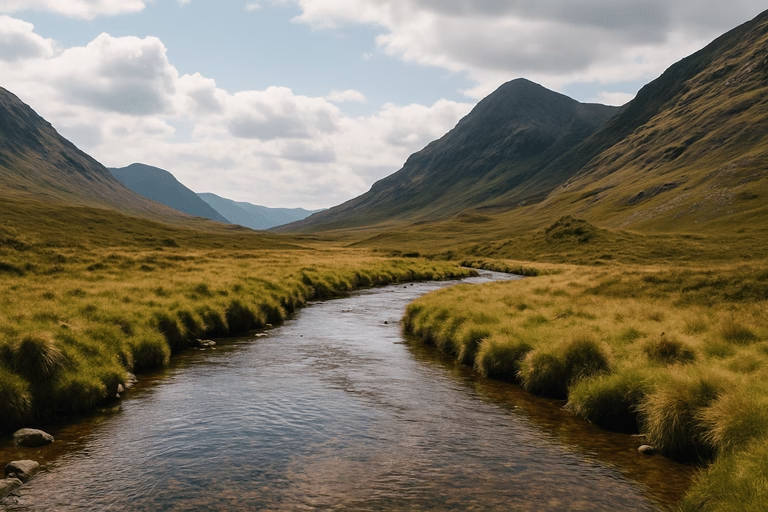Navigating through unfamiliar terrain requires more than just a compass or GPS device—it demands knowledge of the physical landscape itself. Recognizing and understanding land navigation terrain features can be the difference between staying on course or getting hopelessly lost. Whether you’re training for the military, preparing for a hiking expedition, or simply want to sharpen your outdoor skills, mastering terrain interpretation is essential.
This guide covers the key types of land features, how to identify them on maps and in real life, and how to use them to plan efficient, safe routes. We’ll also explore how terrain affects movement, visibility, and navigation strategy.
Understanding the Five Major Land Navigation Terrain Features
The foundation of terrain navigation begins with the five major features you’ll find on a topographic map: hill, ridge, valley, saddle, and depression. Each of these plays a vital role in route planning and orientation. By learning to identify these shapes both visually and on contour lines, you can begin to read the landscape like a pro.
Choosing the Right Orienteering Equipment for Every Adventure
For example, hills appear as concentric circles on a map, while ridges form elongated patterns. Understanding these basic land navigation terrain features gives you the ability to determine elevation changes, identify routes of least resistance, and recognize potential hazards. These insights are crucial for everything from military operations to backcountry hikes.

Interpreting Contour Lines and Elevation
Topographic maps are filled with contour lines that represent elevation and terrain shape. The spacing and shape of these lines are your clues to understanding the landscape. For instance, closely spaced lines indicate steep terrain, while wider spacing suggests a gentler slope.
To truly understand land navigation terrain features, you must learn to visualize the three-dimensional landform from two-dimensional data. A series of nested circles with decreasing values toward the center, for example, signifies a depression. In contrast, increasing elevation values represent a hill or mountain peak. Reading contour lines effectively allows you to estimate travel difficulty and anticipate natural obstacles.
Minor Terrain Features and Their Importance
Beyond the five major terrain features, there are also five minor ones: draw, spur, cliff, cut, and fill. While less prominent, these landforms provide additional detail that enhances your understanding of the terrain. For instance, a spur (a small ridge that juts out) can provide high ground advantages, while a draw may offer concealed movement paths.
Minor land navigation terrain features often become crucial when you need to find micro-terrain clues or plan tactical movement. Recognizing them allows for finer control in navigation, especially in challenging environments like dense forests or mountainous areas. Moreover, combining major and minor features leads to a fuller situational awareness.

Using Terrain Association for Real-World Navigation
Terrain association is the practice of using known land features to verify your location and direction without constant reference to a compass or GPS. It’s one of the most reliable methods for experienced navigators. For example, by identifying a ridge line on the map and then spotting it in the distance, you can confirm your position and heading with confidence.
Directions of Compass for Navigation Mastery
When practiced properly, terrain association increases navigation speed and builds resilience against technology failure. Therefore, a strong understanding of land navigation terrain features directly improves your ability to move efficiently through unknown or remote areas. It also reduces the risk of navigation errors in low-visibility situations like fog or nighttime.
Planning Routes Based on Terrain Features
Choosing a route isn’t just about getting from point A to point B—it’s about doing so safely and efficiently. Terrain features help you evaluate options and avoid dangers like steep ascents, impassable rivers, or exposed ridgelines. For example, following a valley might offer easier travel, while traversing a saddle could provide a low-risk path through high terrain.
Moreover, integrating land navigation terrain features into route planning allows you to anticipate water sources, shelter options, and potential rest points. This foresight becomes especially valuable in emergencies when you must alter plans quickly. Strategic navigation based on terrain is one of the most important skills for any outdoor adventurer.
Terrain’s Influence on Visibility and Movement
Not all terrain is created equal—some features drastically affect your visibility and movement. For example, valleys can limit your field of view but offer concealment, while ridges give you wide visibility but expose you to weather and observation. Choosing where to move and when often depends on these trade-offs.
Understanding how land navigation terrain features affect your speed and safety enables you to make smarter decisions in the field. For instance, moving along a contour line (a practice called “contouring”) can conserve energy, while climbing directly uphill may quickly drain your stamina. Tactical and recreational users alike benefit from this knowledge.

Integrating Compass and Map with Terrain Awareness
While GPS technology is widely used today, traditional tools like a compass and paper map remain reliable in all conditions. Combining these tools with terrain awareness creates a powerful navigation strategy. For example, by shooting an azimuth with your compass and aligning it with visible terrain features, you can confirm your direction with high accuracy.
Moreover, when terrain features become your reference points, you reduce the risk of drift and increase your ability to stay on course. Reinforcing your understanding of land navigation terrain features ensures you’re not blindly following a bearing—you’re actively navigating using all available data from the environment.
Mistakes to Avoid When Navigating Terrain
Even skilled navigators make errors. One common mistake is misidentifying terrain features on a map, especially when they appear similar—such as a draw versus a spur. Another error is underestimating elevation gain, which can lead to exhaustion or misjudged travel time.
Bushcraft Clothes for Comfort and Safety Outdoors
Furthermore, ignoring minor land navigation terrain features can cause you to miss important clues about your surroundings. Failing to update your position regularly or relying solely on GPS are additional risks. The best way to avoid these mistakes is by consistently cross-referencing the map with what you see and feel in the terrain around you.
Quick Recap: Key Points on Land Navigation Terrain Features
Let’s summarize the key takeaways from this detailed guide on navigating by terrain:
- The five major terrain features (hill, ridge, valley, saddle, depression) are foundational for map reading.
- Contour lines and elevation data help translate 2D maps into 3D mental images.
- Minor features (spur, draw, cliff, etc.) offer detailed insights for refined movement.
- Terrain association is a powerful technique that increases accuracy and speed.
- Route planning improves when terrain features are used to evaluate safety and difficulty.
- Visibility and movement are affected by the shape and elevation of the land.
- Combining compass, map, and terrain strengthens navigation under all conditions.
- Avoiding common mistakes comes down to consistent practice and terrain awareness.
Mastering land navigation terrain features is a lifelong skill that sharpens your ability to move intelligently through nature. Whether for adventure, sport, or survival, terrain literacy empowers you to make smart, confident decisions in any landscape.

